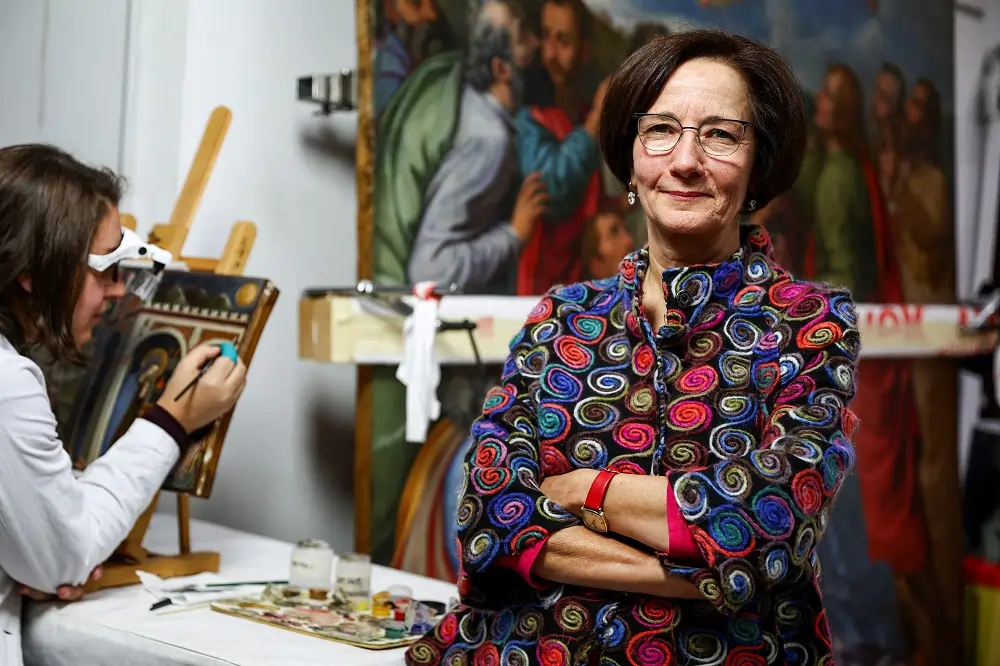
Steady hearts, steady hands as Vatican experts restore masterpieces
By Philip Pullella
VATICAN CITY (Reuters) – Whenever Alessandra Zarelli, a restorer at the Vatican Museums, works on a masterpiece by an artist such as Michelangelo, she steadies her heart so her mind can concentrate on the task at hand.
The standing order for Zarelli and her colleagues is to work with just chemistry, physics and history and leave any excitement and awe at the door.
“The emotion of working on something like a Michelangelo is truly indescribable,” said Zarelli, 56, who helped restore a fresco by the Renaissance master in the Pauline Chapel.
“But I try to remain detached while I am working. I have to concentrate on the material and the work that I have to do, otherwise the emotion would paralyse me,” she said while working on a painting from 1550 called Enthroned Madonna and Child with Saints by Italian artist Moretto da Brescia.
“At the end of the day I keep some moments for myself to contemplate and enjoy the emotion of being so close to marvellous masterpieces,” she said
She is one of about 36 members of an elite team at the Vatican Museums’ restoration lab for paintings and wood.
The team is responsible for looking after thousands of square meters of wall paintings, including the Sistine Chapel frescoes, as well as some 5,300 framed oil paintings and dozens of wooden statues.
A CENTURY OF RESTORATION
The restoration of the Moretto painting included a new internal frame, smoothing out deformations caused by humidity, removal of oxidized varnishes and retouches on both the painting as well as the gilded external frame.
The painting and wood restoration lab, one of eight specialised units in the museums, allowed a few news organisations rare access to mark its 100th anniversary.
Restoration techniques are constantly changing and today’s restorers often have to repair or remove mistakes of their predecessors who worked decades or even centuries ago with rudimentary techniques.
Another problem, usually from the distant past, is that restorers were not technicians but artists in their own right, some of whom thought they could “improve” the original by adding highlights or contrasts, according to the lab’s director, Francesca Persegati.
“It’s important to be humble in this job, to respect the work but also to have a scientific background to understand the materials,” she said.
Before a painting even reaches the lab, it already has undergone tests using ultra-violet, infra-red and other non-invasive methods to detect paint added later, pigmentation and any underlying sketches.
In another part of the lab, Caterina Manisco was restoring an 1895 painting called Madonna and Child Between St. Theresa and St. Francis, by Emma Richards. The Italian-born artist worked in the court of Queen Victoria and Prince Albert, a rarity for a woman at the time.
“Because she was a woman, I somehow feel very close to her,” said Manisco, 40, an external restorer at the lab.
To mark the 100th anniversary of the paintings and wood lab, the museums have placed QR codes near 37 works of art, allowing visitors to see beyond the surface and experience the many layers in the life of a restoration.
(Additional reporting by Antonio Denti; Editing by Alison Williams)


